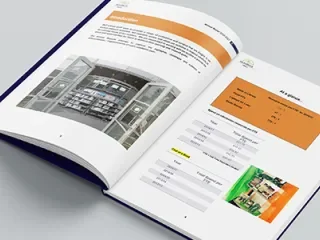CVs & Cover Letters
Information and advice for DkIT students on CVs and cover letters, covering everything from CV layout to content to style.

Before we begin … Curriculum vitae means “story of your life”. You can’t afford to treat this literally. Your CV gives an overview of who you are and what you have to offer an employer. Be selective.
Always ask yourself the question “Is this going to be relevant to the employer who is reading this?” A CV should be targeted to the specific job criteria found in the job description and the person specification.
Often, job specifications are divided into Essential and Desirable requirements. The desirable requirements are used to narrow down applicants. When you have completed your CV or would like to find out more about interview techniques download our Interview Guide HERE.
Think of it as a matching process:
- By targeting your CV you will highlight the EVIDENCE an employer is looking for. Generic CVs will hide it.
- Employers may only give a CV an initial 7-to-10 second glance before deciding if they want to read it in more detail.
- Make sure that your CV is clearly laid out and you demonstrate valuable skills to ensure the employer will want to read it more carefully.
- Your CV may form the structure of your interview. Be prepared to develop and talk with confidence about anything on your CV.
Layout and design:
You can influence where the employer looks on your CV by the amount of space you allocate to specific sections. For example, in your education section for most circumstances, you’ll want to draw employers to your degree. You can do this by giving it more space than any other courses or degrees you have done.
- You should also think carefully about your choice of headings to highlight key experience.
- Use a clearly legible font, e.g. Arial, Calibri, Verdana, or Tahoma, no smaller than size 11.
- Put headings and subheadings in a larger font, and consider using bold or italics to emphasise them.
- Make sure your dates are consistently formatted, clearly chronological and aligned.
- Use consistent subheadings – for instance, list all previous employment items in the same style.
- Use short blocks of information, in bullet points if possible, as opposed to large blocks of text.
- Formatting for black and white is your safest bet when it comes to reproducing your CV.
Types of CVs
Chronological CV
The most common CV. Has standard sections such as education and work experience. Your achievements in each section will be ordered in reverse chronology (ie, most recent first).
Skills-based CV
Most commonly used when you have significant relevant experience or an existing career and are looking to change direction and need to emphasise skills that are transferable.
Hybrid
A combination of the above two styles. They include a more detailed employment and education section, skills section with evidence and examples.
Infographic & Video CVs
Used in creative industries to present your creative skills. This could be in the form of an infographic CV, using graphic design to showcase your skills and experience or a video or animated / interactive CV to highlight your technical skills. For traditional and non-creative roles, a quirky CV more than likely will not be suitable. Gauge your audience beforehand.
Academic
Commonly used in postgraduate applications for research-based courses or lecturing positions. Places emphasis on your studies, projects, dissertations, publications, conferences you presented to and your areas of academic interest and research.